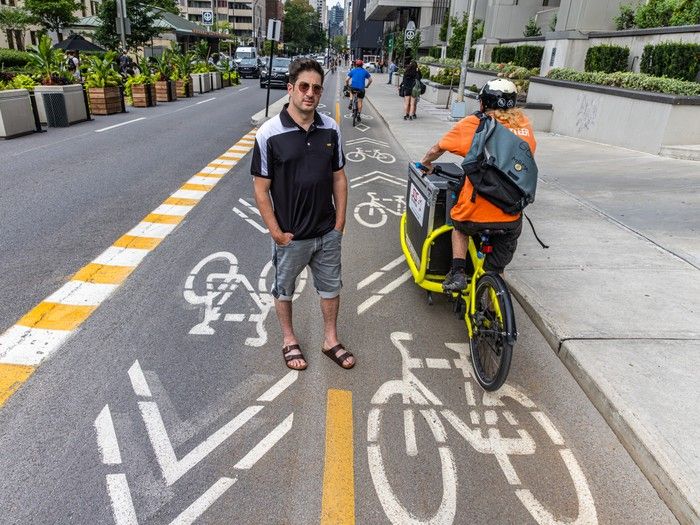10 questions to test your knowledge of pavement markings around the city. Good luck.

Here are some confusing, obscure, even erroneous road markings. Can you correctly guess what each one means?
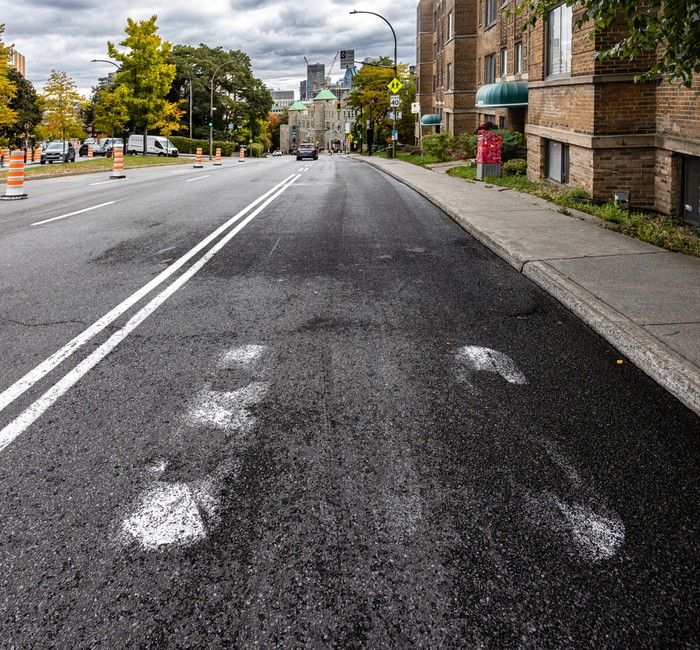
1.
The faded word BUS in white letters on this stretch of southbound Côte-des-Neiges Rd. indicates:
(a) The lane is only for buses.
(b) It’s upside down — it’s actually an ad for a deli.
(c) It’s only a directive to the bus driver to be in that lane.
(d) It’s an error.
(e) It’s to make tourists feel welcome because it can be read in French or English.
Answer: (d) It’s an error. The Société de transport de Montréal (STM) says the marking was painted by the Agence métropolitaine de transport (AMT), which was abolished in 2017. The STM says it doesn’t put the white BUS symbol on city streets where a reserve bus lane is only in effect during certain hours of the day. So why was this one on Côte-des-Neiges repainted as recently as 2020? Insert an emoji with rolling eyes here.
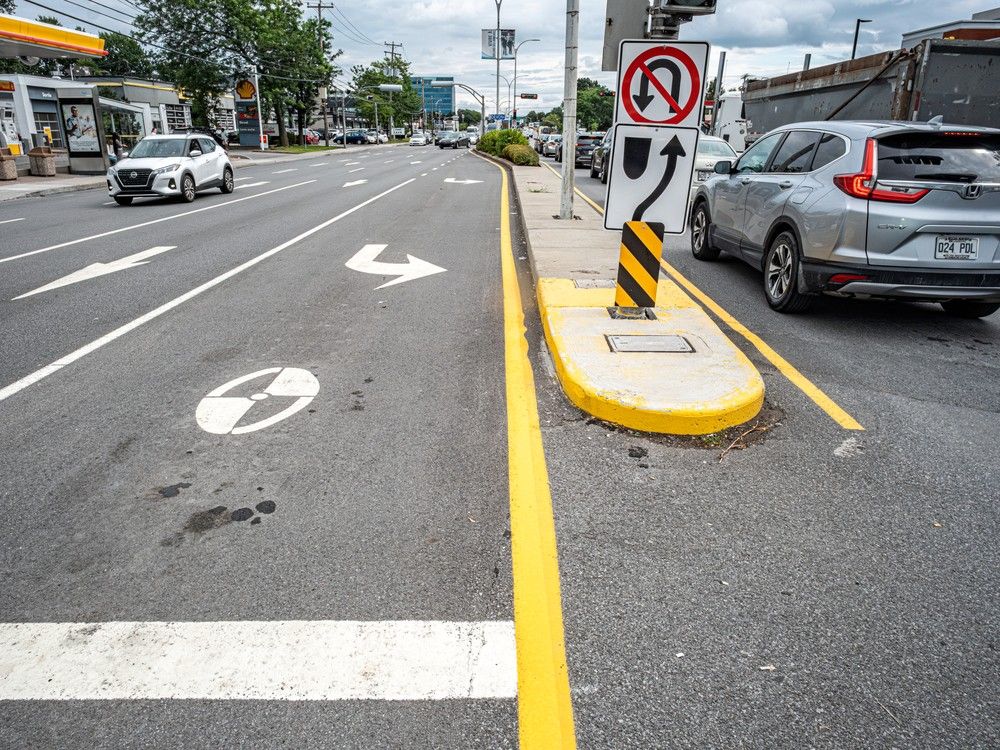
2.
The circular symbol seen here, usually found around the West Island, means:
(a) Nuclear weapons are permitted in this lane.
(b) Caution: this lane is radioactive.
(c) The traffic light is controlled by a sensor under the pavement.
(d) Vehicle must stop on this symbol to activate the traffic light.
(e) Both c and d are correct.
Answer: (e) Both c and d are correct. Many drivers will catch on that the symbol indicates a sensor, but they don’t necessarily know where it is or that they have to stop their vehicle on top of the symbol to activate it.
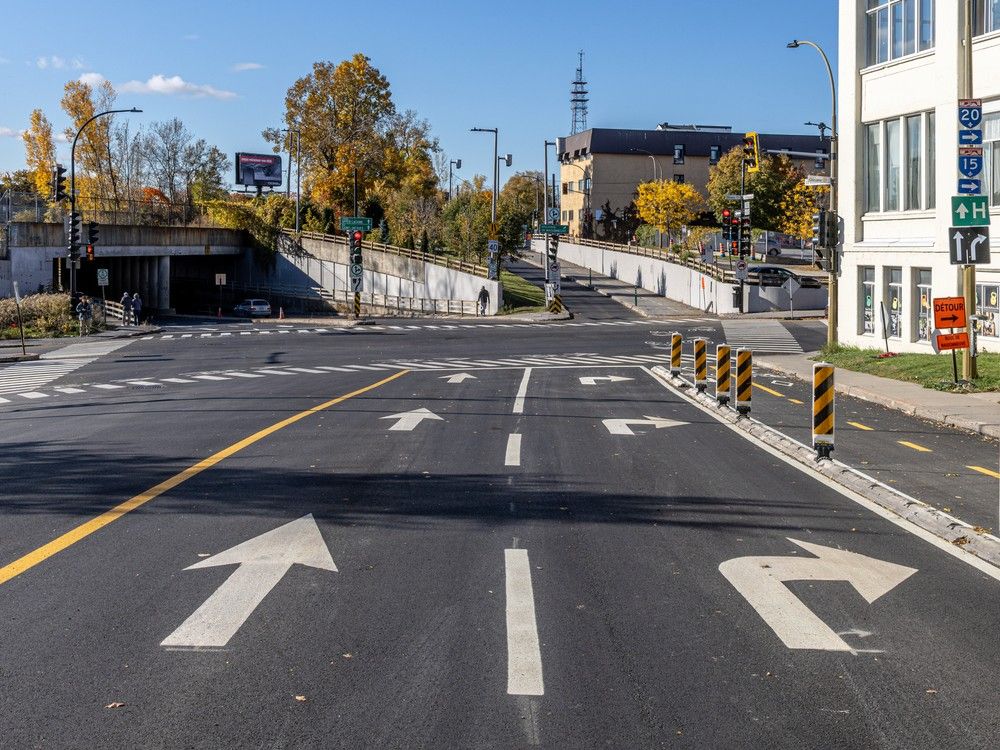
3.
The straight arrow in the left lane of westbound de Maisonneuve Blvd. at Décarie Blvd. in Notre-Dame-de-Grâce means:
(a) No left turn.
(b) Use this lane to cross the intersection and enter the left lane of Upper Lachine Rd.
(c) Use this lane to cross the intersection and enter the left or right lane of Upper Lachine.
(d) Use this lane to cross the intersection and enter de Maisonneuve, which is to the right of Upper Lachine.
(e) All of the above.
Answer: (e) All of the above. Yup, the left lane is for every possibility except a left or right turn onto Décarie Blvd. Left turns are prohibited. And the right lane is only for right turns onto Décarie. But the straight arrow on the pavement in the left lane, which is also on the sign near the corner, is confusing because only the left lane of Upper Lachine is actually straight ahead. The other options in this odd, five-way intersection require varying degrees of turning to the right.
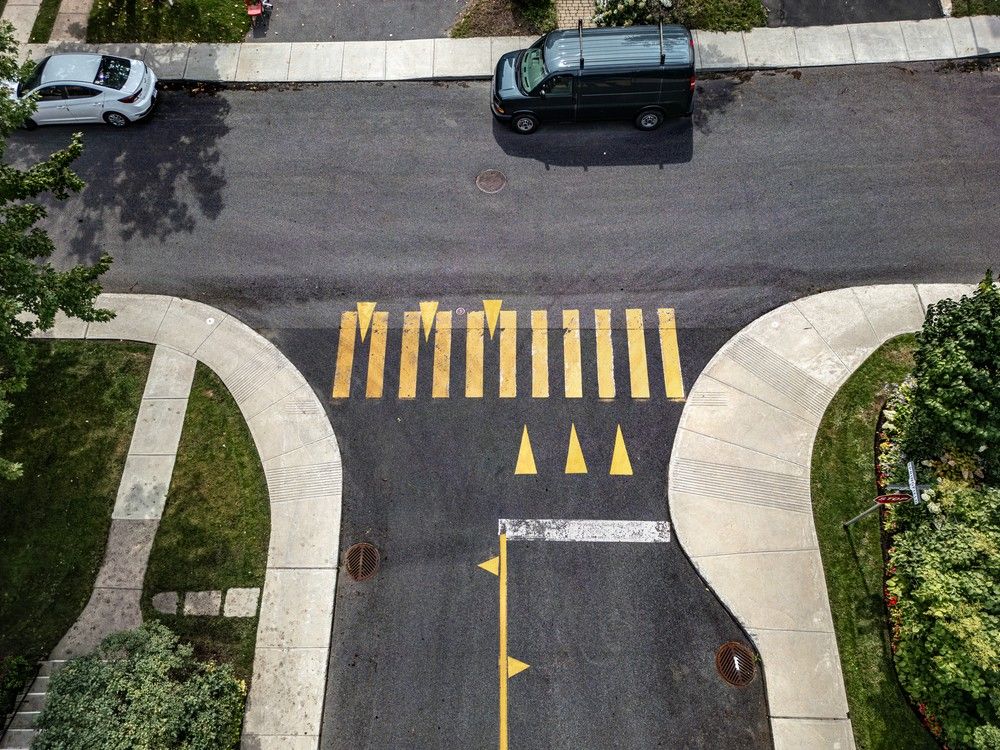
4.
There are two parts to this question:
4.1 The large yellow triangles (pointing toward the crosswalk in the photo) indicate:
(a) The direction of traffic.
(b) Speed bumps.
(c) Nothing. It’s pretty, though, isn’t it?
(d) Crosswalk ahead.
(e) None of the above.
Answer: (b) Speed bumps. Many municipalities paint large yellow arrows on speed bumps to point them out to motorists. It’s not consistent across Montreal, however. Outremont borough, for example, paints the entire speed bump yellow.
4.2 The little yellow equilateral triangles (pointing left and right in the photo) are intended to:
(a) Show public works crews where the sewer is.
(b) Show motorists where the sidewalks are.
(c) Point out an obstacle.
(d) Cover a pothole.
(e) None of the above.
Answer: (a) Show public works crews where the sewer is. This symbol is used in a few communities, like Westmount, Montreal West and the borough of Verdun. In winter, snow gets pushed to the sides of roads, concealing — and blocking — the sewers. The yellow triangles show municipal workers where they are. Other communities paint a yellow line along the edge of the sidewalk to indicate where sewers are.
And all these yellow triangles are not to be confused with the yellow triangles described in the Quebec drivers’ handbook. The handbook says large yellow equilateral triangles indicate the road is subject to surveillance by aircraft.
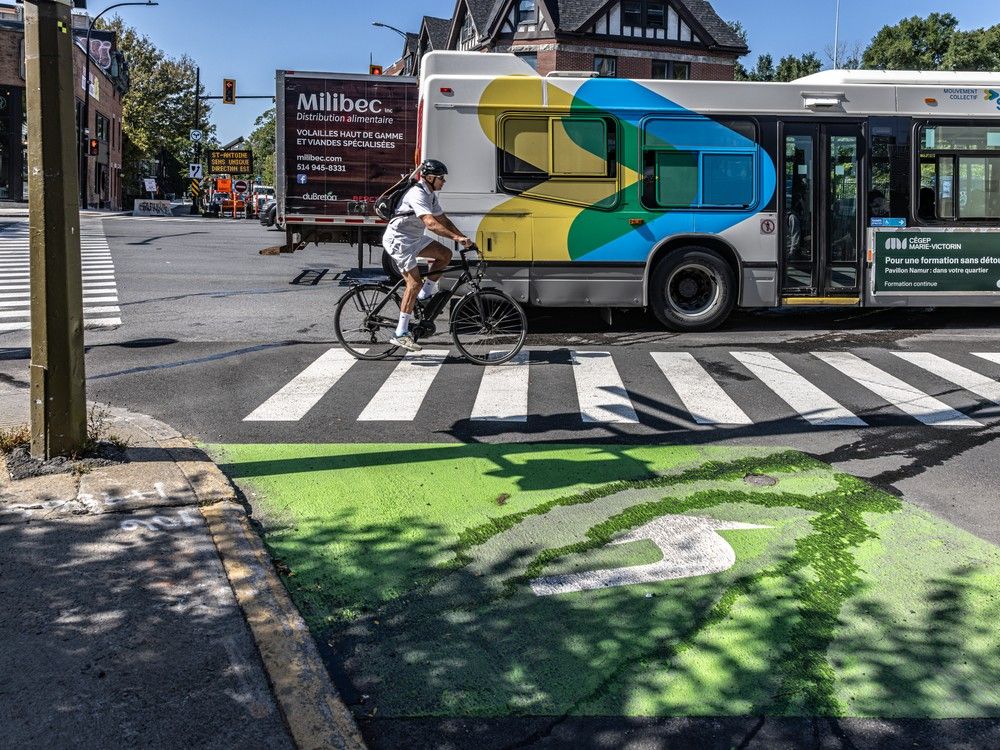
5.
Bonus points for this stumper:
This bent arrow on the new St-Antoine St. W. bike path at the intersection of Atwater Ave. indicates bikes should:
(a) Zig, then zag.
(b) Advance sideways.
(c) It’s really meant for cyclists heading north on Atwater.
(d) It’s an error.
(e) It’s actually pointing upward and telling cyclists to fly over the intersection.
Answer: (c) It’s really meant for cyclists heading north on Atwater. Believe it or not, the green box with the curved arrow inside the bike path on St-Antoine is intended for cyclists traveling north on Atwater who want to turn left onto St-Antoine.The green box is called a “storage area” or a “bicycle hook turn storage area,” and cyclists gather here as part of a two-step turn at a busy intersection. Part of the confusion is that the green box with the arrow is tucked around the corner from Atwater, in the St-Antoine bike path, with no accompanying signage. In fact, a pole at the corner partially blocks the view of the box from Atwater. As well, there’s no bike path or bike lane on Atwater, so no markings to lead cyclists to the box.
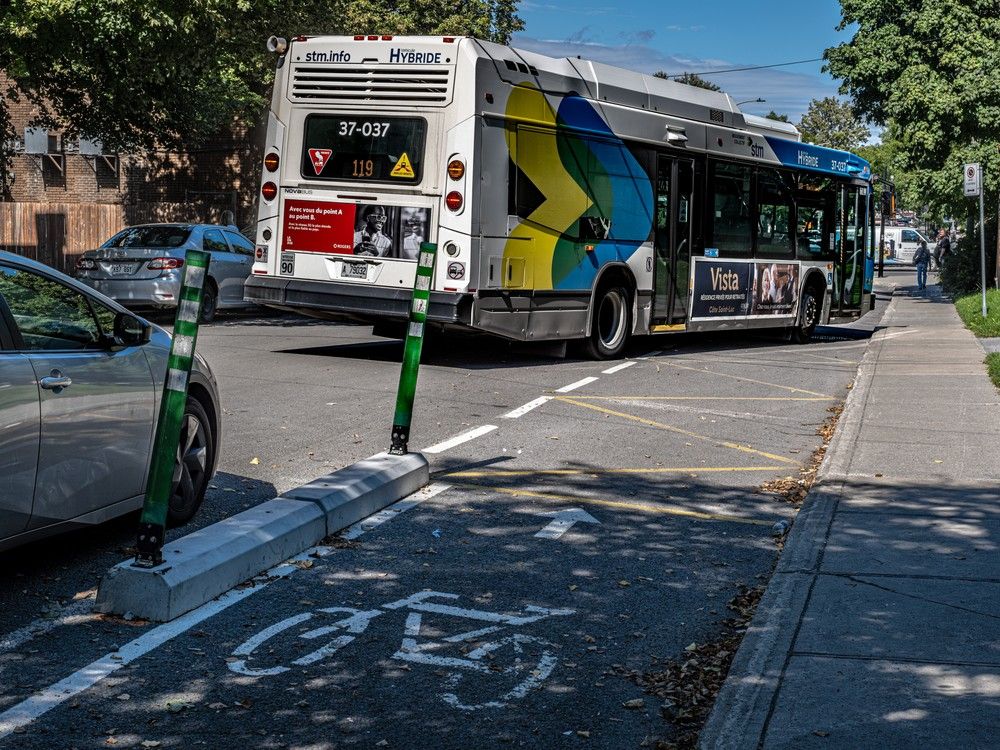
6.
A cyclist arriving at a yellow zigzag should:
(a) Continue over the zigzag.
(b) Press the “elevate” button on their bike and fly over the zigzag.
(c) Change lanes because motorists and cyclists must avoid the zigzag.
(d) No one can agree on its meaning.
(e) All of the above.
Answer: (a) Continue over the zigzag … if there’s no bus in the way. Yellow zigzags are painted in front of bus stops on streets with a bike lane. The STM says the lines are only informative, to let cyclists know there’s a bus stop.
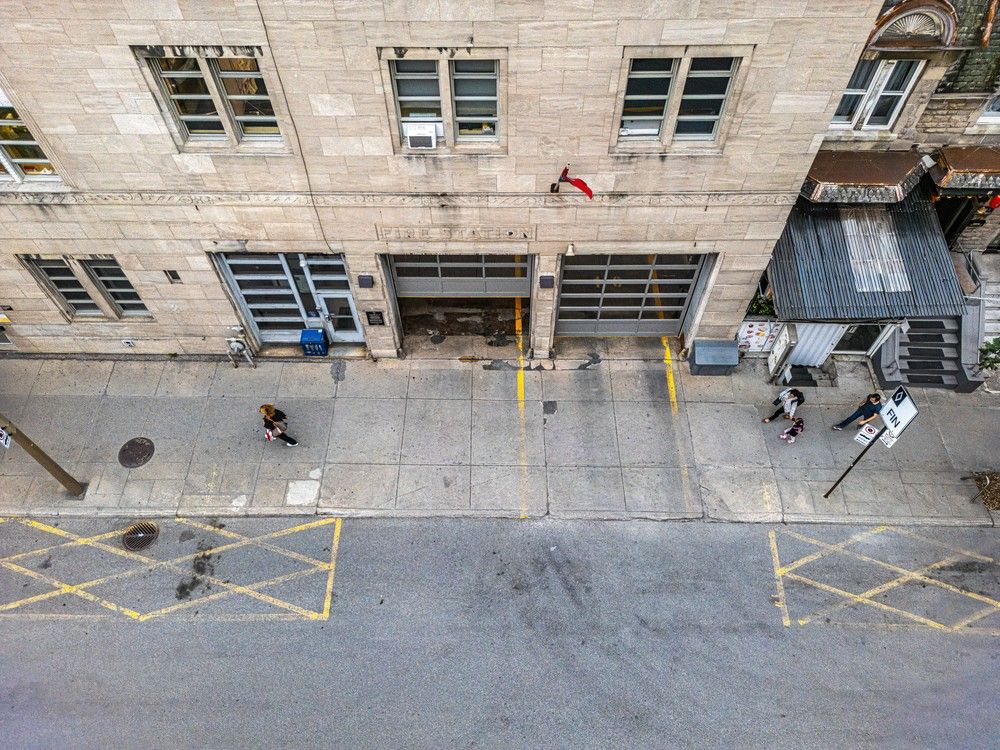
7.
The yellow grids in front of Montreal fire stations indicate:
(a) Motorists cannot drive on the grid.
(b) Motorists cannot park on the grid.
(c) Motorists cannot stop on the grid.
(d) Motorists and cyclists cannot drive, ride, stop or park on the grid.
(e) Motorists cannot stop anywhere alongside a fire station, regardless of where the grid is painted.
Answer: (e) Motorists cannot stop alongside a fire station, regardless of where the grid is painted. The Highway Safety Code prohibits immobilizing a road vehicle within five or eight metres of a fire station (or police station). The fire department says its vehicles need a lot of space to reverse and back into the station garage. The painted yellow grid is meant to emphasize that it’s a no-stopping zone for cars, even if a driver is only stopping “for a minute” with their four-way flashers.
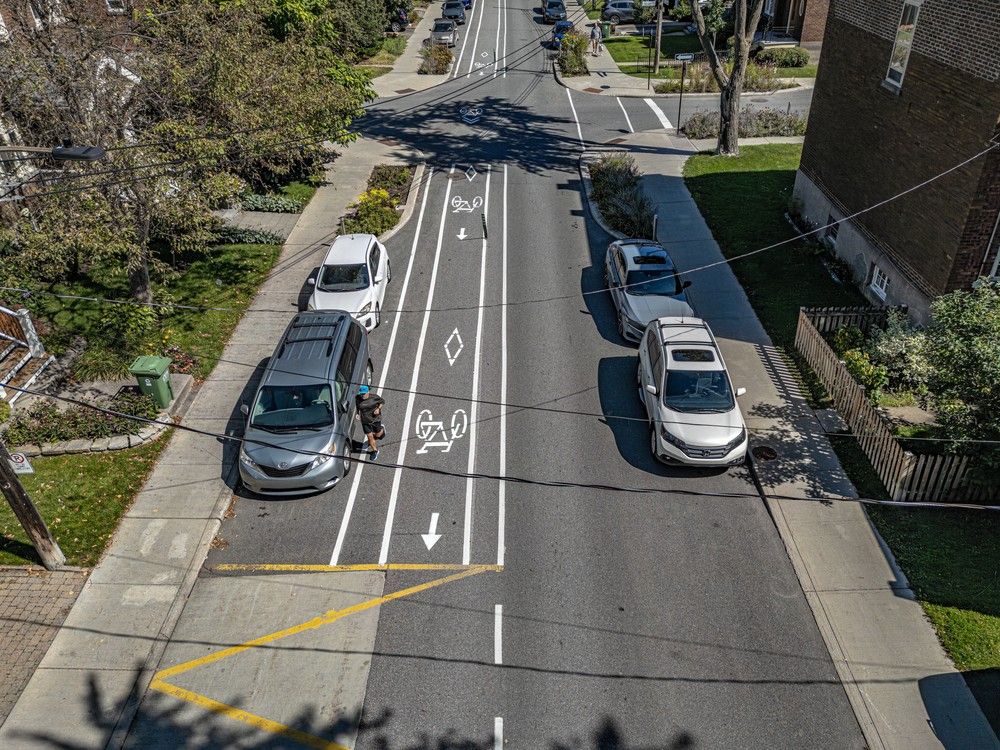
8.
Many bike lanes on the island are painted with a single solid white line. The double solid white lines along this bike lane in N.D.G, mean:
(a) Cars cannot cross the path to park by the curb.
(b) It’s an extra buffer between the bike lane and the vehicle lane.
(c) Nothing — white paint was on sale, so they had leftovers to paint an additional line.
(d) Dogs can run alongside their cycling humans between the double white lines.
(e) None of the above.
Answer: (b) It’s an extra buffer between the bike lane and the vehicle lane. Côte-des-Neiges—N.D.G. borough says it’s for safety wherever a road is wide enough for a double line.
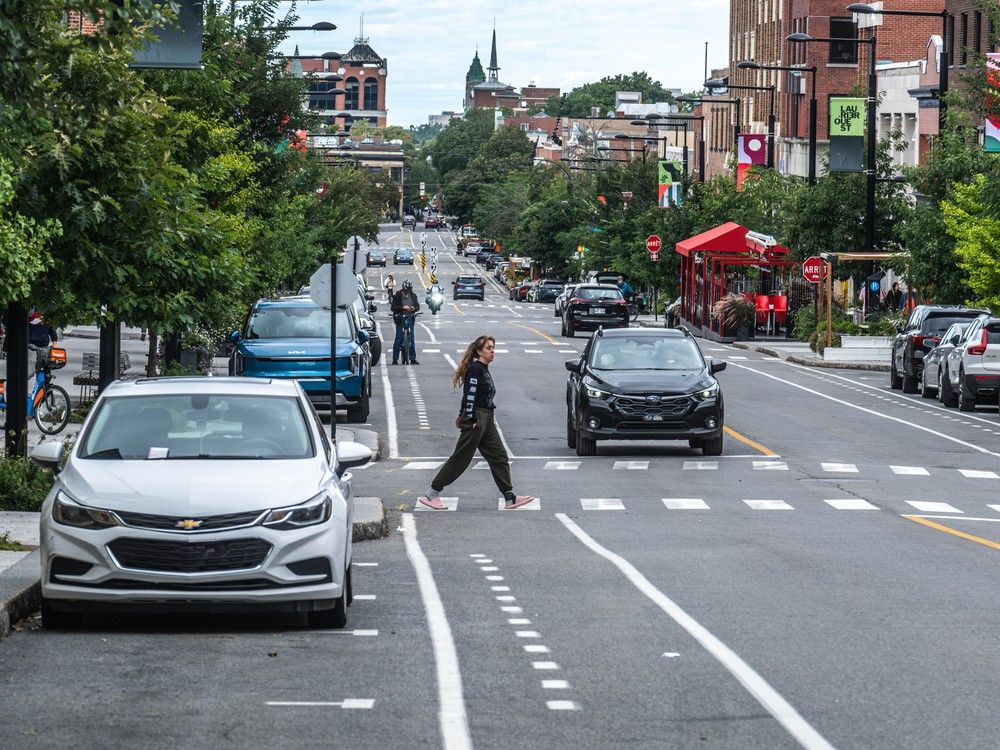
9.
The off-centre broken white line in the bike path on either side of Laurier Ave. in Outremont indicates:
(a) Adult cyclists should ride on the wide side and children should ride on the narrow side.
(b) Cyclists can ride side-by-side on the wide side.
(c) The door of a parked car can swing out as far as the broken line.
(d) Cars are permitted to cross the bike path to park next to the curb.
(e) It’s an error.
Answer: (c) The door of a parked car can swing out as far as the broken line. The broken line was painted on the bike lanes on this section of Laurier as a City of Montreal pilot project in 2019. The line was supposed to show cyclists where it was safe to ride in the bike lane to avoid being “doored.” But city crews keep repainting the lines.
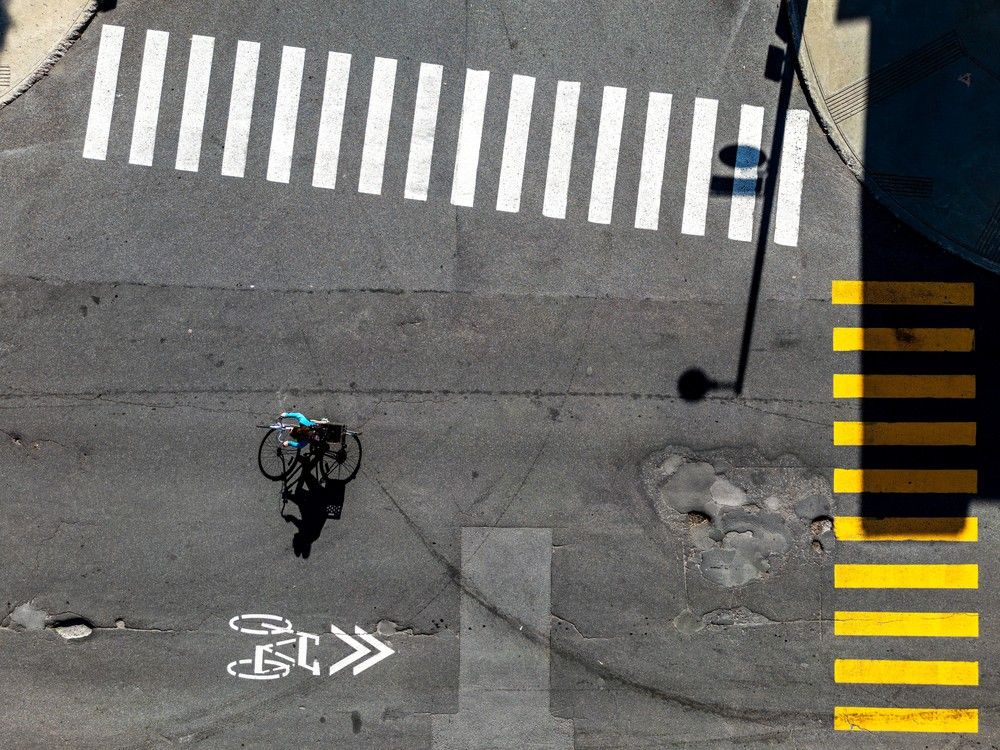
10.
The white bike symbol with two chevrons but no solid white line means:
(a) The road is shared by cars and bikes.
(b) This is where bikes should ride, with or without a solid white line.
(c) The direction of the bike lane is changing.
(d) All of the above.
(e) None of the above.
Answer: (d) All of the above. The bike with chevrons, without a solid white line — called a “sharrow” in some places — indicates that motorists and cyclists share the road. The chevrons and bike without the solid white line are also used to indicate a bike lane is changing direction. But outside of Quebec, a “sharrow” painted in the centre of the road indicates that cyclists and motorists must travel single file; Quebec has no such caveat. Simple, right?
